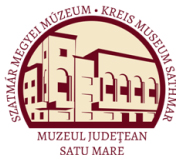Rusu, Adrian Andrei - Szőcs Péter Levente: Arhitectura religioasă medievală din Transilvania 4. (Satu Mare, 2007)
Serii de monumente / Emlékcsoportok / Monument-groups - Sófalvi András: A Sóvidék románkori egyházi építészetéről
45 A Sóvidék román kori egyházi építészetéről ON THE ROMANIC CHURCH ARCHITECTURE OF THE 'ŢINUTUL SĂRII’ (SALT-LAND) (Abstract) The study presents the research results on several Romanic churches in the ‘Ţinutul Sării ’ (region on the upper course of Târnava Mică river, part of the Harghita and Mureş counties). The work is part of a wider research project on the medieval topography and archaeology of the region. A rescue excavation at the Calvinist church of Ocna de Sus (Felsosófalva, County of Harghita) discovered the foundations of a medieval church, in 1999. Part of the gothic nave, and the Romanic and Gothic phase of the sanctuary was revealed. The Romanic sanctuary was a semicircular apse with buttresses. The semicircular tabernacle, belonging to this phase, is included in the north-eastern wall of the modern church. Historical data, provided by the papal tithe of the years 1332-1337, on the duties of the parish of Sărăţeni (Sóvárad, Mureş County) imply also the existence of the first, probable Romanic, church of the village. Except of one carved stone, there is no information on the ground-plan and the structure of this phase. The stone remained at one of the buttress of the existing church, in secondary position. The ruined chapels in the outskirts of the villages have an important role for the archaeological topography of the region. Out of the nine identified and localized chapels, three can be more closely dated to the Romanic period, through the analysis of the written sources and with art historical methods. Two of these chapels are located on the Firtuşu Mountain. One is inside the medieval castle, while the other, dedicated to Saint Peter, is on the southern peak of the mountain. The third chapel is located on the outskirts of Praid village, called the Chapel’s Plane. Most of these chapels were not yet archaeologically investigated. Therefore their closer analsys will be the task of future archaeological investigations.
